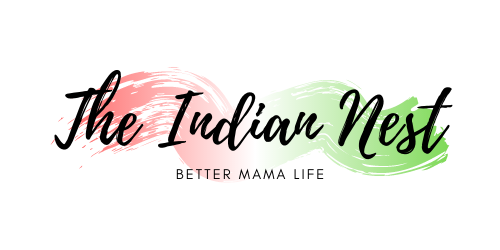Have you ever thought that storing food and maintaining quality has many benefits in our daily life? Do you know how long food can be kept for safe use?
These proper and safe food storage that saves you money!
I never thought about saving money is also possible!

You can save most of your grocery money by preventing spoilage and food-borne illness caused by harmful bacteria.
If you’re a beginner, don’t get panic, relax, and do slowly. I’m sure that you can make it possible by taking small and steady routines. I have created food storage time chart for pantry and refrigerator for your easy home management.
Our home food (groceries) have specific places to store them according to their properties. I have created a printable food storage time chart for both refrigerator and cupboards which can make proper and safe food storage.
Some Benefits of Proper Food Storage

Photo by Ella Olsson from Pexels
- Preserve food quality, including nutrients, flavor, and texture.
- You can reduce food wastage, which saves money and is better for the environment.
- You can buy things in bulk, saving money and easy for your meal planning and meal preps.
Once you learn the proper and safe food storage, it is a whole lifetime habit for healthy living.
Food can classify into three groups, which require different storage places according to their stage and form.
Three Types of Food
1. Perishable Foods
These food include many raw fruits and vegetables, as well as meat, dairy, and eggs. Cooked foods are also considered perishable food.
Perishable foods need to be store at refrigerator or freezer temperatures.
2. Semi- Perishable Foods
Foods that are semi-perishable depending on how they are stored and handled. It can spoil quickly or can have an extended shelf life.
Flour, grains products, dried fruits, and dry mixes are considered semi-perishable. It may remain unspoiled for six months to a year. Frozen, some can last even longer.
The key to semi-perishable food’s long-time freshness depends on neat and dry hands, and an airtight jar does the job.
3. Non-Perishable Foods (Staple)

Image by monicore from Pixabay
Dried pulses, spices, and canned goods are all non-perishable foods. They won’t spoil unless they handle carelessly.
To store food properly, you need to know how to keep food and how long it will be safe and high-quality.
Remember that stored foods are never fresher than when first put into storage.
When you go grocery shopping, choose perishable items last and go straight home and store them properly in the refrigerator or freezer.
Do you know there is a good habit to follow with our refrigerator? This rule made my food kept away from spoiling and wastage.
‘First in First Out’ (FIFO) that you rotate items to use the older items first. Also, buy foods in reasonable amounts so that you can use them while they are still of good quality. Excess food may become waste.
Some general guidelines for Proper Food Storage (How long food can be store?)

Photo by Gareth Hubbard on Unsplash
Pantry
- Pantry storage conditions should be dry, cold, and dark.
- The temperature in the pantry should be 50 to 70°C; higher temperatures speed up deterioration.
- Always store foods in the coolest cabinets away from the range, oven water heater, dishwasher, or hot pipe. For example, the area under the sink is not the right place to store potatoes or onions.
- Although many staples and pantry items have a long shelf life and maybe advertised at special prices, buy what you expect to use within the recommended storage times.
- To prevent foods from deteriorating in the pantry, store them in metal, glass, or plastic containers.
- Keep these containers and commercially canned foods clean and free of dust, which can drop into them when opened.
- Treat storage areas for pests and clean the pantry periodically to remove food particles.

Get your free printable: Click here
Refrigerator
- Maintain the refrigerator temperature at 40°F or below.
- Always store the most perishable items, including meats, poultry, fish, eggs, and dairy products, in the coldest section.
- Do not overload the refrigerator; air must be able to circulate freely to cool foods adequately.
- Clean the refrigerator to remove spills and spoiled foods. These provide a medium for bacteria to grow in and possibly contaminated other foods.
- Refrigerator temperature only slows bacterial growth; they do not prevent it.
- To maintain the quality of refrigerated foods, store them in airtight wraps or containers. These prevent food from drying out and odors or flavors from transforming from one food to another.
- Avoid using plastic bags or boxes not made for storage.
- Do not reuse plastic bags that contained raw meats, poultry, or fish.

Get your free printable: Click here
Freezer
- Maintain a freezer temperature of 0°F or below. Food quality deteriorates at a temperature above 0°F.
- A good rule of thumb is that if the freezer can’t keep ice cream brick-solid, the weather is not cold enough.
- Always remember that freezer temperature store or prevent bacteria from growing, but do not kill them.
- Package items for the freezer in moisture and vapor-proof wraps or containers.
- Refreezing may lower the quality.
- Do not refreeze combination dishes such as stew, curries, soups, casseroles.

Get your free printable: Click here
Food Freshness -( check the label)

Image: pixabay
While researching about proper and safe food storage, another thing I found is all about food freshness. We can judge the freshness of food when the manufacturer uses “open dating” on food packages.
That means the manufacturer uses a calendar date to help store managers to determine the length of the time food for sale. These dates are seal on perishable foods.
With “open dating,” there are four types of dates that may appear on a food package.
1. “Sell by” or “Pull date.”
This date tells the store how long to display the food for sale.
After this date, food is usually safe to eat as long as it is stored for no longer than the recommended time and handled and prepared safely. See the food storage timetable for recommendations.
2. Best if used by (before) date

This date means that the food will be of its highest quality or flavor if consumed before the package’s date.
Foods are safe to consume after the date indicated on the package if they store for no longer than recommended, are handled and prepared correctly, and show no spoilage sign.
3. Expiration date
The expiration date is the last day we should eat the food. Except for eggs, discard this date do not consume foods.
EGGS: The expiration date is the last date a store can sell the eggs and still refer to them as “fresh.”
Buy eggs before the expiration date and use them within 30 days. After 30 days, discard the eggs. Do not buy eggs if the expiration date on the package has passed.
4. Pack date
Pack date is the date the food was packaged or processed. We may be able to determine the age of the product by looking at all these dates.
What about Leftovers?
Planing and using leftovers carefully can save money and time. Here comes my favorite part; I used to follow bulk cooking and save leftovers for lunch or dinner if I get no time.
If you are a busy mom like me, this idea can save lots of our time. It is vital to prepare and handle foods properly to prevent food-borne illness.
Things to remember for a safe leftover consumption
- Wash your hands before handling foods, and use clean utensils and surfaces.
- Refrigerate or freeze foods in covered, shallow (less than 3 inches deep) containers within 2 hours after cooking. Leave air space around the boxes or packages to allow cold air to circulate and ensure rapid, even cooling.
- Label food storage containers with the date so that the food can be safe for consumption.
- Plan to use any cooked foods within a safe refrigerator or freezer storage time.
- Before serving, cover and reheat leftovers to 165°F. Reheat soups, sauces, gravies, and other wet foods to a rolling boil.
- If in doubt, throw it out. To prevent outdated, obviously spoiled, or possibly unsafe leftovers from eaten by people or animals, discard them in a garbage disposal.
What about packaged foods?

Photo by Eduardo Soares on Unsplash
New food-packaging techniques are making it possible for processors to offer prepared foods that have extended refrigerator times.
Longer storage times are made possible by vacuum packaging or modified atmosphere packaging, which replaces with gases such as carbon dioxide or nitrogen.
These packaging techniques can slow spoilage, discoloration, and bacterial growth.
The package for many products, including fully cooked roast chicken, tuna spread, etc. Although it offers many advantages to us (consumers), the food must be handle properly because,
- Food may be processed 4 to 6 weeks before the “sell by” or “use by” date. The date assumes that the product is appropriately refrigerated throughout its shelf life.
- Some bacteria that cause food-borne illnesses, such as Listeria and Yersinia, can grow slowly under refrigeration.
- Many of these foods require little or no additional cooking or heating. Therefore, there would not be any bacteria during packaging.
Precautions when using refrigerated prepared foods
- Make sure the food is cold before you buy it.
- Check the ‘sell by’ or ‘use by’ date on the package.
- Read the label and carefully follow the storage, cooking, and heating instructions.
- Use these foods within the recommended length of time.
Conclusion
The food storage time table’s recommendations are to maintain the maximum safety and quality of foods stored when of high quality.
Quality of security will not improve by storage.
All these are some of the basic food-storage that we can follow in our home.
I hope you like these proper and safe food storage tips and tricks!
I’m sure that you can also save food waste and money like my family and me. Are you following any of the above methods?
Which are your favorite food storage methods?
I like to hear from you. I will see you soon in another blog post.
with
❤️
Nasreen

P
Pin this for later!


 Smart Habits Of Happy and Productive Working Moms
Smart Habits Of Happy and Productive Working Moms
Leave a Reply